Amantia
Q454510Amantia: Illyrian hillfort and Roman town, near the modern village of Ploçe in Albania.
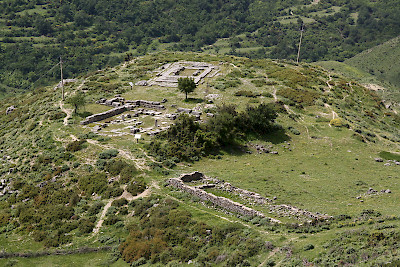
Situated on a hill that rises some 600 meters above the Adriatic Sea, he Illyrian fortress of Amantia and its port Oricum are mentioned for the first time by Pseudo-Scylax in the 330s BCE.note About a century later, the inhabitants, together with other people from Atintania (i.e., southern Illyria), were recognized as Greeks by the Theorodokoi of Delphi and allowed to take part in the Delphic competitions (e.g., the Pythian Games). It may be from this age that the Amantians claimed to be Abantes from Euboea.note
The town experienced great economic prosperity during the Hellenistic period and in c.230 BCE, it started to mint its own coins. Julius Caesar mentions that in his war with Pompey, he received support from the Amantians.note After the assassination of Caesar, Apollonia, Byllis, and Amantia supported Mark Antony and were captured by his opponent Brutus.note
Amantia had adopted a political structure similar to that of towns like Apollonia and Epidamnus-Dyrrhachium. The chief executive magistrate was prytanis, who discussed the city's affairs with a council (Boule), which in turn had a town secretary. The city had also had its own agonothetes, the organizers of the games. Several smaller settlements belonged to the municipality of Amantia, such as the fortified centers of Kanina, Triporti, Cerja, Armeni, Matohasanaj, Hadëraj and Olympe in Mavrova.
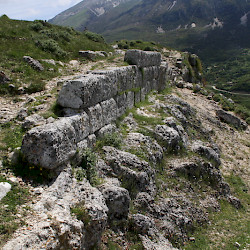 Amantia, Terrace wall |
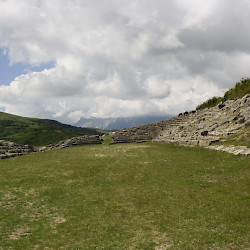 Amantia, Stadium |
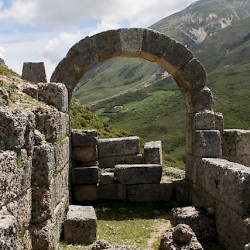 Amantia, Gate |
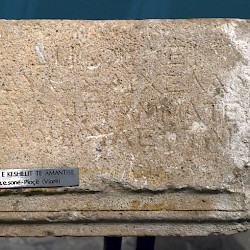 Amantia, Decree |
Several monuments from the Roman age survive: the fortified wall (about two kilometers long), a gate, the temple of Aphrodite, and some monumental tombs in the northeastern necropolis.The impressive Hellenistic stadium was built east of the ancient city on a natural terrace; it dates back to the third century BCE. On one side, supported by the hill, there were seventeen rows of seats, while on the other side, there were only eight. The seats have inscriptions with the names of officials (e.g,, Iparhos) or citizens (e.g., Socrates and Apollonios).
In Late Antiquity, the city's bishop is mentioned as one of those who took part in the Council of Serdica (343 CE). A Christian basilica from this age is preserved. The last reference to Amantia dates from the reign of the Byzantine emperor Justinian (r.527-565 CE) and can be found in a list of restored towns.note